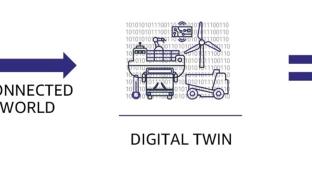Retail Cloud Innovators Series

Streamline Retail Order Fulfillment with AI
Amazon Prime Day, 66 hours of exclusive deals for Prime members, has become a much-anticipated annual shopping event. During Prime Day 2021, Prime members in 20 countries shopped more than any previous Prime Day, purchasing over 250 million items worldwide.
If you’ll indulge the geek in me for a minute, I’ll also share some internal technology stats from Prime Day 2021:
- Amazon DynamoDB, which powers the Alexa platform, Amazon.com websites, and all Amazon fulfillment centers (FCs), made trillions of API calls during Prime Day, peaking at 89.2 million requests per second.
- Amazon Simple Queue Service (Amazon SQS) is a key technology in Amazon fulfillment processes that helps manage the microservices in our software applications. This year, Amazon SQS hit a new record, processing 47.7 million messages per second during Prime Day.
Given those mind-blowing stats, have you ever wondered how Amazon can fulfill millions of orders accurately with Prime delivery? As you might expect, order fulfillment processes are quite complex. The secret sauce, so to speak, is the "symphony" of skilled employees and automated machines working together, each doing its part in Amazon’s finely tuned fulfillment ecosystem. Below, I break down seven key fulfillment processes and explain how Amazon uses artificial intelligence (AI) to streamline and speed the time it takes to get customers their orders.
1: Forecasting Demand
An accurate demand forecast drives efficient fulfillment processes. Demand forecasting uses data to predict how much product customers will purchase in a given timeframe. Amazon Forecast uses AI-based algorithms along with historical purchase data, weather, promotions, and holidays to help position products in the right geographies so items are closer to the customers who are most likely to purchase them.
2: Receiving, Staging, and Storing Inventory in Amazon FCs
Trucks deliver products to FCs where inbound employees work with robots to stage and store products in FC inventory. The AI-based robots efficiently transport storage pods with many different bins to the inbound employees, who scan every incoming product and stow the items in bins. An AI-based computer vision solution uses colored lights to indicate in which bin the associate should not place items. You would think storing similar items together would be most efficient. However, we’ve found that it’s more efficient to use random stow, which means inventory bins store a variety of items – books next to sports equipment next to toys, for example. The random stow reduces mistakes when picking from the bins. Amazon also uses Amazon SageMaker, a fully managed machine learning service, to track, audit, and reconcile the quantity and location of all products in an FC’s inventory.
3: Selecting the Optimal FC to Fulfill an Order
When a customer places an order, AI determines which FC should fulfill the order, based on product availability, distance to the customer, and other factors. The AI technology also determines if items need to be shipped from multiple FCs or if items can ship from a single FC so the order can be shipped in a single package.
4: Picking Items in an Order
AI technologies direct robots to find the items in the storage bins and deliver the pods to an associate at a picking station. Similar to storing items, an AI computer vision solution uses colored lights to illuminate the correct bin so the associate can easily find the items. The associate compares the item to an image on a screen to verify the item is correct.
5: Selecting Packing Materials and Delivery Carriers
After items in the same order are picked and consolidated, it’s time to prepare the order for shipping. In the SLAM (scan, label, apply, and manifest) stage, AI technologies determine the best box size, packing material, and tape length for the order. Yes, Amazon uses technology to calculate the perfect length of tape so we don’t waste tape. After the order is packaged, an automated AI-based system selects the best delivery carrier based on cost and shipping timeframe. At this point, the shipping label is printed and applied to the package.
6: Validating Quality Control and Sorting for Carrier Pickup
As a final quality control check, Amazon weighs each package. If the package is the correct weight, it is sorted for pickup by the delivery carriers. However, if the package is not the expected weight, it’s rerouted to an associate who opens the package, checks the order, and works to resolve the issue.
7: Monitoring Equipment
Throughout the FC, Amazon uses AWS IoT Greengrass to proactively monitor equipment. The open source edge runtime and cloud service alerts technicians when a failure has, or might, occur so the mechanic can quickly repair the machinery.
By augmenting skilled employees with AWS-powered AI technologies in the cloud, Amazon can reliably fulfill customer orders. Other retailers can streamline the fulfillment processes with the technologies AWS has developed and lessons Amazon has learned over the last 20 years.
If you’re interested in any of these technologies, AWS is here to help you. Contact your account team today to get started.






